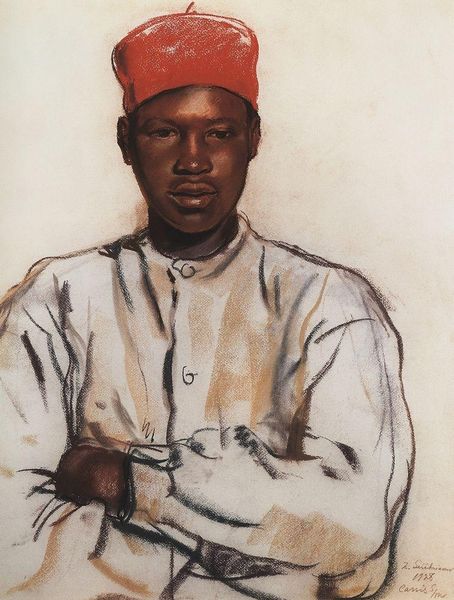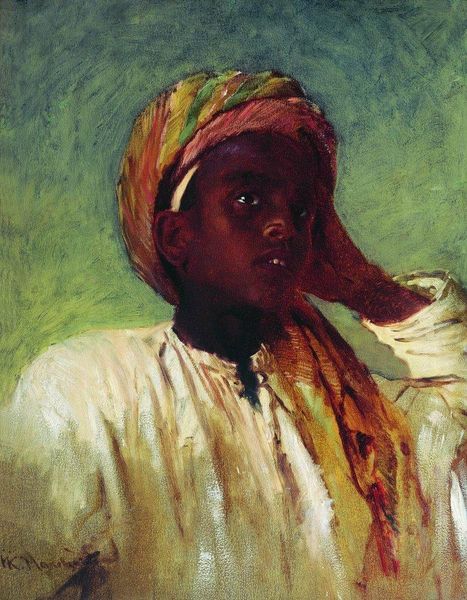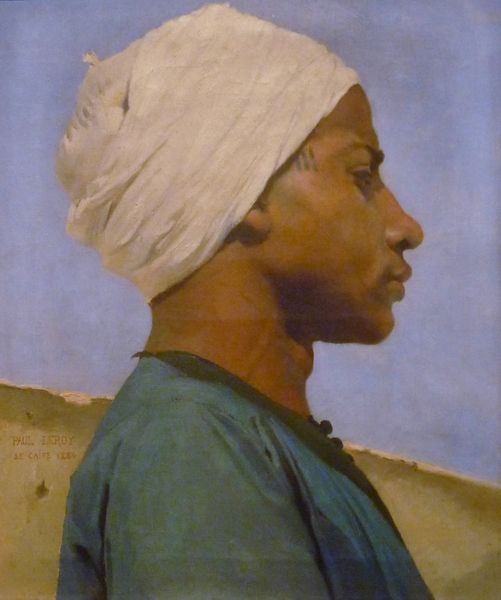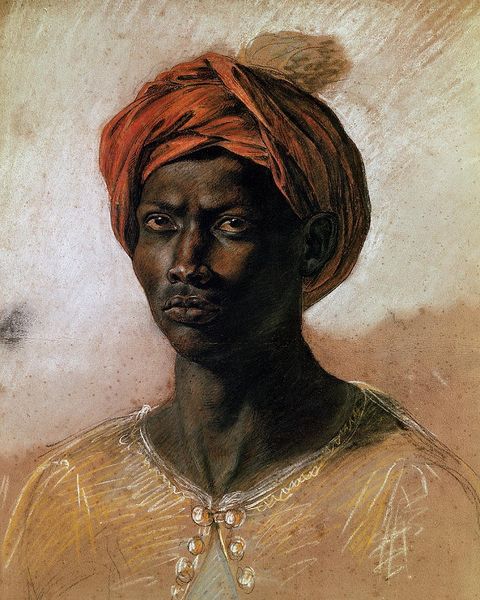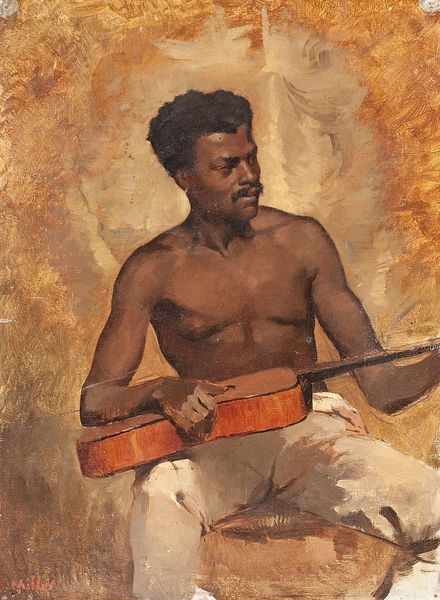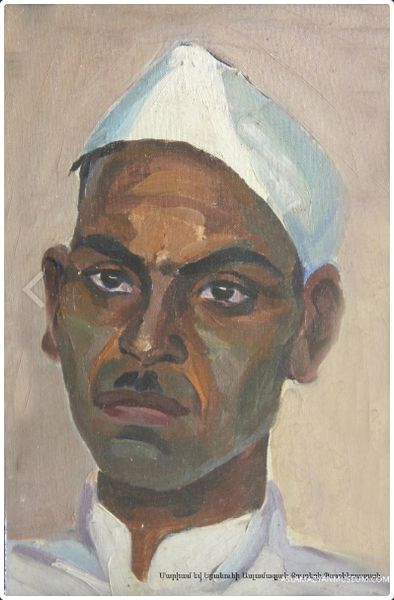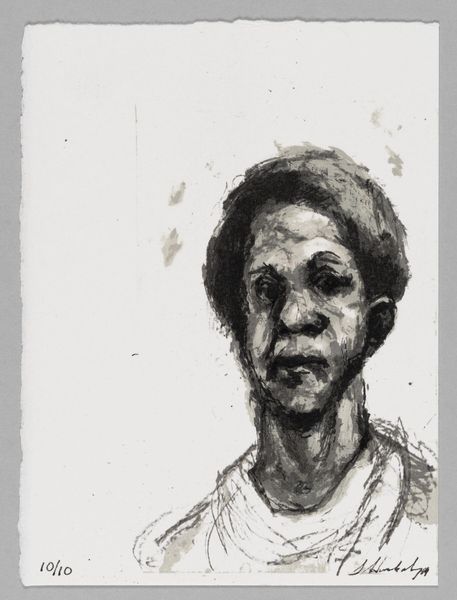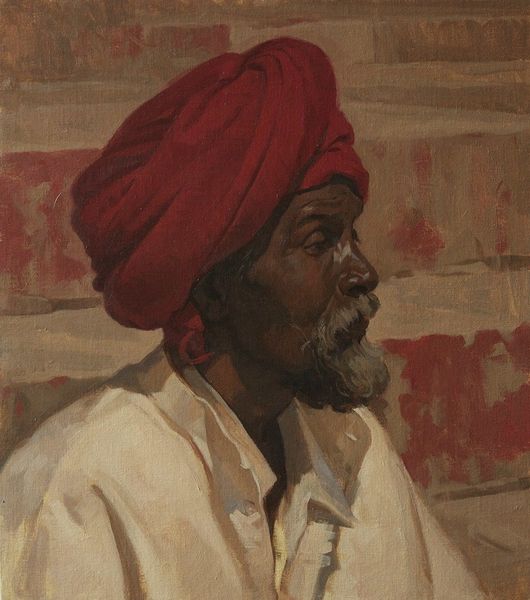
Copyright: Public domain
Editor: Here we have Vasily Polenov's 1881 oil painting, "The Head of a Nubian Man." I'm immediately struck by how intimate it feels, almost like a captured moment. What historical currents do you think shaped this portrait? Curator: Well, considering its period, it’s fascinating to consider this work within the context of late 19th-century Imperialism and growing interest in the “Orient”. Think about who gets to paint whom, and *where* these images circulate. Polenov, a Russian artist, creating a portrait of a Nubian man… what societal power dynamics are subtly at play here? Editor: So, you’re saying that even a seemingly simple portrait can reflect complex social power? Curator: Absolutely! Consider the rise of ethnography and anthropological studies at this time. Paintings like this could be seen as contributing to a visual catalog of different "races" which then could perpetuate certain colonial ideologies, despite any possible intention of the artist. Where would an image like this be displayed, and to what ends? Editor: I never considered the role of art as a tool for broader societal control, even unintentionally. It’s uncomfortable, but crucial to acknowledge. Curator: Precisely. Furthermore, what assumptions might a European audience at that time bring to the viewing of a 'Nubian Man'? The romanticism and realism styles listed for the art here also contributed to exoticism, shaping stereotypical representations. Editor: It makes you think about how museums today have a responsibility to contextualize these works, offering a fuller narrative. Curator: Exactly. Contextualization isn’t about erasing the past, but about understanding its influence and prompting necessary conversations. Editor: That’s really changed how I’ll look at historical portraits from now on. It’s so important to view them critically and ask those questions. Curator: Indeed. Art serves not just as aesthetic pleasure but also a powerful window into societal norms, biases, and shifts in power, challenging us to rethink history.
Comments
No comments
Be the first to comment and join the conversation on the ultimate creative platform.
